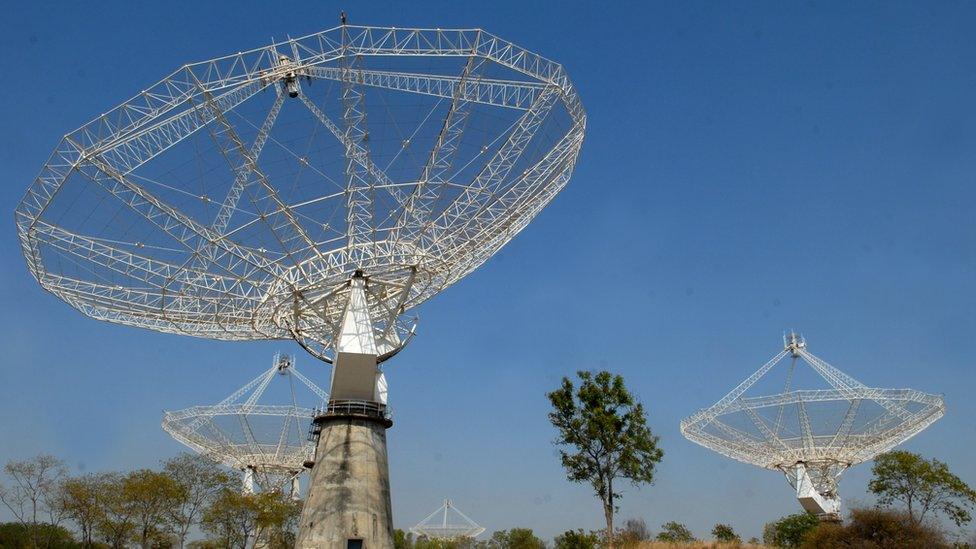Space: Radio signal detected from most distant galaxy
- Published
- comments

This telescope could hold the key to unlocking the secrets of the early universe
Astronomers have captured a radio signal from the most distant galaxy ever observed.
It's the first time this specific type of radio signal has ever been detected at such a large distance.
It was recorded by the Giant Metrewave Radio Telescope in India.
Scientists hope it will lead to discovering how the earliest stars and galaxies formed and unlock other secrets of the early Universe!
This is what the signal from the far away galaxy looked like
The signal astronomers' detected was at a very specific wavelength known as the '21-cm line' or the 'hydrogen line'.
Until now, it's only been possible to capture this sort of signal from galaxies nearby like the Milky Way.
It came from the galaxy SDSSJ0826+5630 and was emitted when our 13.8 billion-year-old galaxy was just 4.9 billion years old.
That's the equivalent of travelling back in time by 8.8 billion years!
We know a lot more about the Milky Way than we do about galaxies further away
After detecting the signal, the astronomers were able to measure the galaxy's gas content.
They observed that the atomic mass of the gas content of this particular galaxy is almost twice the mass of the stars visible to us.
The mass of a galaxy can tell scientists a lot about how that galaxy formed and evolved.
This means that astronomers might be able to observe radio signals from other early galaxies far away from Earth in the future using a long-wavelength radio telescope.
From this they hope to look at the evolution of stars and galaxies and see how the Universe itself has evolved over time.
- Published24 January 2023
- Published17 January 2023
- Published23 January 2023
